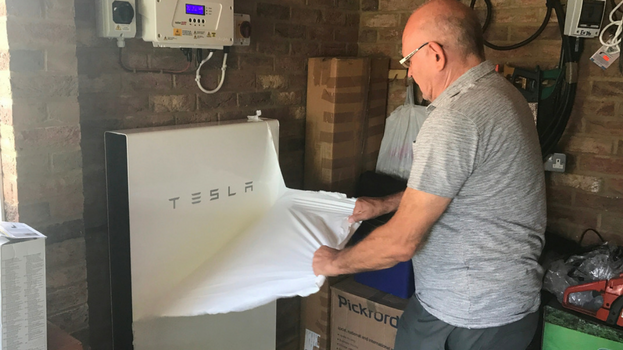
Save up to 60% on your electricity bill - buy cheap, use peak! And, if you have solar PV... Generate over 70% of your electricity on site using residential solar storage.
With the advent of smart metering, time of use tariffs are coming into their own. The traditional Economy 7 tariff has now been extended to full time-of-day tariff differentiation.
As batteries start to become more commonplace, it is anticipated that not only will there be time-of-day import tariffs, but there will also be time-of-day export tariffs, with those in a position to export during the winter peak times (4-7pm) having the potential to earn comparatively high tariffs from export.
The time-of-day import tariff from Bulb profiles as follows (during summer time):

See the local rates on the Bulb smart tariff.
For a consumer on a flat 22.36p per kWh tariff, there is an opportunity to save around 10p per kWh (compared to their current tariff) by ‘buying cheap’ at night and ‘using peak’ in the day.
If the system is used with a solar system as well, then further savings are available from on-site usage of the solar electricity. If these savings are conservatively valued at 5p per kWh, then with a 2,400kWh on site usage benefit, the total battery savings will be around £450 – £500 per annum.
And that’s before the anticipated rise in electricity prices is factored in as we all start to drive electric cars… or any future peak time export revenue earning opportunities are factored in.
A well designed residential solar storage system should provide >70% of annual electricity requirement, with grid top up required online in November to March.
The less you rely on the National Grid for your electricity, the more you protect yourself from rising prices.
In the UK, hundreds of thousands of domestic and small commercial solar systems have been installed. Having paid to install the system the best way to maximise the system's potential is to use as much of the electricity generated by the system on site, rather than exporting it to the grid.
PV systems of all sizes need to be monitored using a smart meter or export meter to receive payment of the electricity exported to the grid. The rate of fixed or variable pay for export is set by the electricity supplier under the Smart Export Guarantee (SEG) scheme. The rate is likely to be in the region of 15p/kWh and given that domestic tariffs are typically 22.36p per kWh it makes sense to use as much electricity on site as possible.
The likely economic gain from a residential solar storage system is analysed in detail in the economics of storage.
Spare capacity within the National Grid has now fallen as low as 1.2%. In November 2015, the National Grid actually had to pay major factories to down tools and cut demand between 4pm and 8pm. The risk of blackouts is increasing; as this risk increases, it makes sense for householders and businesses to start looking at installing backup power supplies.
It always makes sense to use electricity at the point of generation, thus minimising transmission losses. Furthermore in a world where electricity is increasingly in demand, there is environmental and social value in storing energy on site for later use, particularly if such use is at times of peak demand across the grid.
For more information, call us on 0118 951 4490 or download our free guide to energy storage:
Copyright © Spirit Energy 2026 · info@spiritenergy.co.uk · 0118 951 4490
Jobs and Careers
Interested in joining the Spirit team? Email jobs@spiritenergy.co.uk
Spirit House, 25 Albury Close, Reading, RG30 1BD
(Location formerly known as 44 Portman Road, Reading, RG30 1EA)
Spirit Energy is the trading name of Spirit Solar Ltd · UK Company Number 07138647
Although care is taken to ensure that the information on our website (www.spiritenergy.co.uk) and any guides, calculators or checklists provided by us, electronically or otherwise, are accurate and up-to-date, we cannot accept any responsibility for mistakes or omissions. We enter into no express or implied conditions, warranties, terms or representations regarding the quality, accuracy or completeness of the information. We exclude to the extent lawfully permitted all liability for loss or damage, whether direct, indirect or consequential arising out of your use of our website or any guides, calculators or checklists provided by us, or from any information or omission contained in our website or any guides, calculators or checklists provided by us.